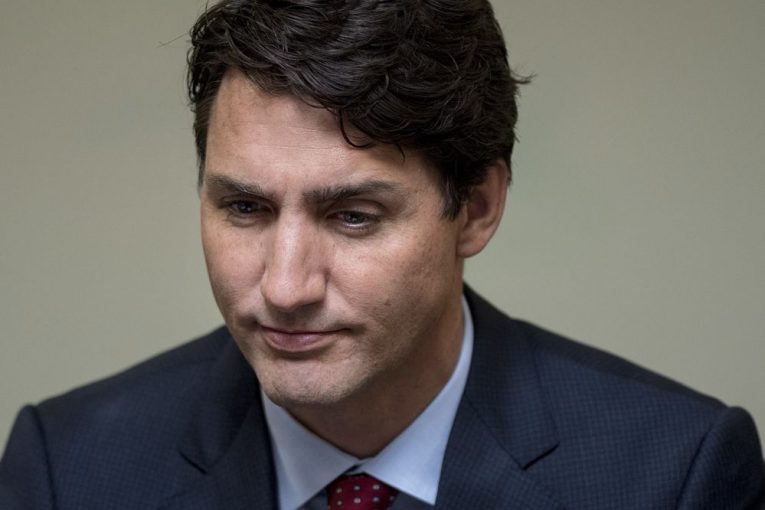
The Northern Gateway pipeline ($7.9 billion), the Pacific Northwest LNG project ($36 billion), and now likely the Energy East pipeline ($15.7 billion) are three privately funded infrastructure projects that would have materially strengthened the economy for decades — and all were scuttled under Prime Minister Justin Trudeau’s watch in the past year.
It’s sad to say, but the last time there was so much heavy handed, poorly thought out federal interference into the energy sector was during the failed National Energy Program in the early 1980s, when Trudeau’s father Pierre was in charge.
The first two projects are gone for good, after frustrated proponents moved on to less-intrusive jurisdictions.
The Energy East project remains in play after proponent TransCanada Corp. said Thursday it would suspend its application for 30 days, however the company suggested it may not build it at all. It’s a reaction to the National Energy Board’s unprecedented decision to widen its study of the project to include the upstream and downstream greenhouse gas impacts of the whole oil industry.
“I believe this was the last straw that broke the camel’s back,” given the many changes already imposed on the project and the $1 billion spent to date, said retired TransCanada executive Dennis McConaghy.
On Friday, the NEB said it has suspended its review of the Energy East and Eastern Mainline projects for 30 days, following the company’s request. During this period, the regulator will not issue further decisions or take further process steps relating to the review of the projects, it said in a statement.
With the 30-day time out, TransCanada may be sending a signal to the federal government to get the NEB to reconsider, and/or to its shippers “that we are closing this thing down and KXL is the last thing out of town,” he said.
TransCanada is waiting for shippers on Keystone XL to recommit after the project was revived by U.S. President Donald Trump, and is also waiting for a route decision by the Nebraska Public Service Commission, the last hurdle before proceeding with construction.
The ball is now in Ottawa’s court to figure out whether the benefits of choking oil and gas development by limiting pipeline construction to meet the Paris agreement greenhouse gas reduction commitments are worth the costs, including continuing harm to the oil and gas sector from Alberta to New Brunswick and to Canada’s reputation as an investment destination.
The blowback Friday suggests many have had enough.
Trudeau should be particularly concerned that Alberta is breaking ranks on Energy East, after making the biggest sacrifice to support his climate change agenda, capping oilsands emissions, accelerating the phase out of coal, and imposing carbon taxes. Clearly, with 100,000 oil and gas workers out of work, Energy East was a step too far even for the left-leaning provincial government.
In a strongly worded statement, Alberta NDP Energy Minister Marg McCuaig-Boyd accused the NEB of “a historic overreach and has potential to impact the future of energy development across Canada.”
“Deciding the merits of a pipeline on downstream emissions is like judging transmission lines based on how its electricity will be used,” she said. “This is not an appropriate issue to include in the review. Additionally, Alberta’s Climate Leadership Plan should satisfy concerns about upstream emissions. Prime Minister Justin Trudeau directly cited this climate plan in his approval of two new pipelines last fall.”
this was the last straw that broke the camelu2019s back
Conservative MP Shannon Stubbs, who shadows natural resources minister Jim Carr, said the Energy East suspension is another hit for workers and their families who depend on energy jobs.
“Throughout the past year, investors have frozen or abandoned Canadian projects and taken all potential jobs with them,” she said. “Uncertainty has pushed capital to south of the border, with less red tape and lower costs. The Liberals’ risky policies are hindering Canadian energy. This is yet another example of how government can literally put oil and gas companies out of business. Minister Carr has commented on this situation, claiming this is a ‘private sector decision.’ But it is actually a direct outcome of Liberal decisions.”
Calgary senator Doug Black, who is also a senior energy lawyer, said the NEB “stumbled” on Energy East and allowed “regulatory creep.”
“I simply do not believe it’s realistic to assess in any meaningful fair way both the upstream and downstream greenhouse gas emissions,” he said. “I don’t know how you do it. I certainly don’t know how you do it fairly.”
Black said there is a real risk that TransCanada will drop the project because it can’t get it done under the NEB’s new rules.
Carr is expected to unveil his government’s final overhaul of the regulatory process, including reforms to the NEB and to environmental assessments, later this fall.
His spokesman, Alexandre Deslongchamps, said in a statement TransCanada’s decision is their own to make.
It’s true that Energy East was once offered an alternative to Keystone XL and that given the oilsands’ investment pullback — due in no small part to Trudeau’s policies — production may not reach the levels once expected.
Yet it’s also true that industry is pursuing many initiatives to reduce its carbon footprint and that the market, not politicians, should have final say on whether to support such a long-term project.
Financial Post
[email protected]
twitter.com/cattaneooutwest
You can read more of the news on source
